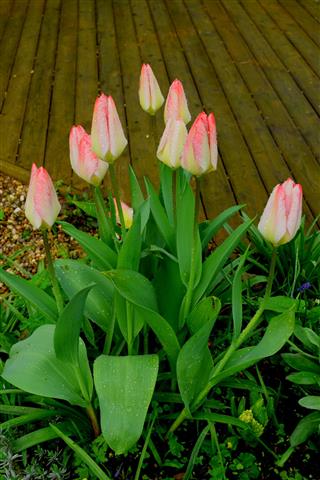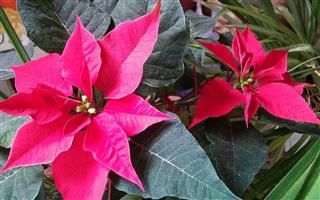
We maybe blissfully unaware of it, but our dogs are at a risk of being poisoned by some common houseplants that we unsuspectingly keep. To prevent an accident, take a look at the list of plants mentioned here, and keep them away from your dogs.
Warning!
Common symptoms of poisoning are vomiting and diarrhea. If you spot these in your dog for no apparent reason, rush to the vet without wasting a moment.
Curious creatures that they are, dogs are habituated to inspecting everything around them. Bored dogs, especially, are quite capable of making chew toys out of anything, including plants, which makes them susceptible to poisoning, and which, at times, may even result in death.
Unfortunately, there is quite a long list of plants and parts of certain plants that are toxic to dogs. Included in the list are several flowering plants and shrubs that are kept within most homes as a means of decoration.
From lilies to buttercups and morning daisies, danger lurks everywhere for pets. Chances that your dog will be making a meal out of some of these plants is a distinct possibility. Therefore, it is recommended that such plants be kept out of the dog’s path.
ASPCA has a comprehensive list of over 1000 plants that range from mildly poisonous to fatal for dogs. This DogAppy article lists common varieties of house plants that can prove dangerous.
Plants Which Could be Fatal
In case your dog has consumed any of the following plants or noxious parts of these plants, he/she may display one or more of the following symptoms – vomiting (bloody or frothy), diarrhea, convulsions, shivering, lethargy.
| Plant Name | Toxic Part |
| Agapanthus | Entire plant |
| Aloe vera | Entire plant |
| Azalea | Entire plant |
| Crocus | Entire plant |
| Cyclamen | Tubers |
| Delphinium | Seeds and plant |
| Dumb Cane (Dieffenbachia) | Entire plant |
| Ferns (asparagus, lace, and emerald) | Entire plant |
| Foxglove | Leaves and stems |
| Juniper | Leaves and berries |
| Lantana | Leaves, flowers, and berries |
| Larkspur | Seeds and plant |
| Lily of the Valley | Entire plant |
| Mistletoe | Berries |
| Narcissus | Entire plant |
| Oleander | Entire plant |
| Rhododendron | Entire plant |
| Sago Palms | Entire plant |
Plants Which Cause Digestive Tract Disorders
If any of the following plants have been consumed, your dog may display symptoms like vomiting, nausea, loss of appetite, and lethargy.
| Plant Name | Toxic Part |
| Amaryllis | Bulbs |
| Aster | Entire plant |
| Baby’s Breath | Flowers and stem |
| Boxwood | Entire plant |
| Buttercup | Entire plant |
| Calla Lily | Entire plant |
| Carnation | Entire plant |
| Castor Bean | Entire plant |
| Chrysanthemum | Entire plant |
| Clematis | Roots and leaves |
| Cyclamen | Entire plant |
| Daffodil | Bulbs |
| Easter cactus | Entire plant |
| Plant Name | Toxic Part |
| English Ivy | Entire plant |
| Freesia | Bulbs |
| Gladiola | Leaves |
| Holly | Berries |
| Hyacinth | Bulbs |
| Hydrangea | Entire plant |
| Kalanchoe | Entire plant |
| Peace Lily | Entire plant |
| Peony | Entire plant |
| Morning Glory | Seeds and leaves |
| Poinsettia | Leaves and flowers |
| Schefflera | Entire plant |
| Tulip | Bulbs |
Additionally, there are several other items which are safe for us, but can be seriously harmful for dogs. Onions, chives, garlic, tomatoes, mushrooms, and grapes are particularly toxic to dogs, so if you have these plants in your yard, it is recommended that you fence the area to make it off-limits to your dog. To get a comprehensive list of toxic plants that can harm your dog, contact your local SPCA unit.















